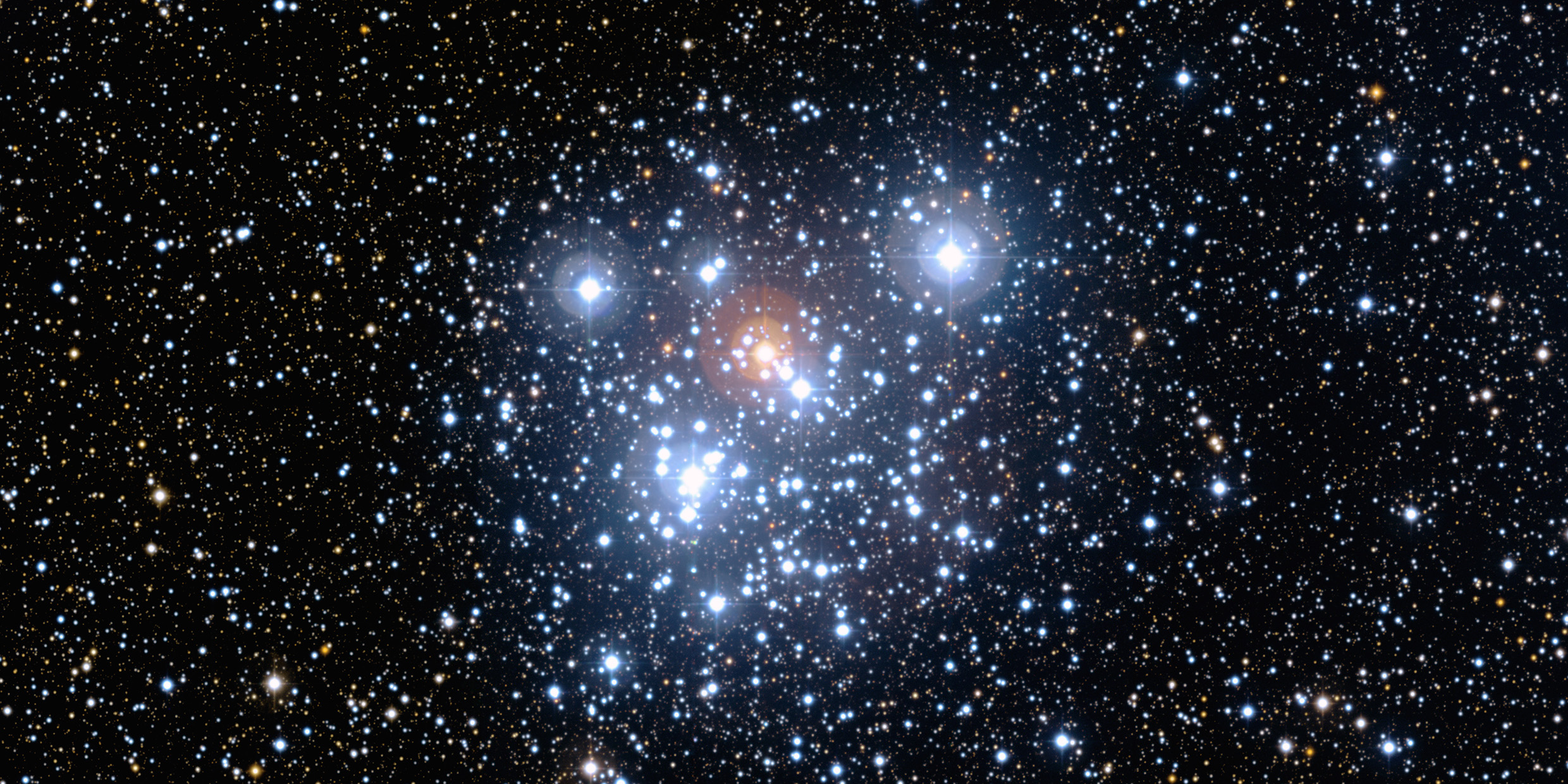Originally published 20 February 1984
I have heard it said that the art of observing the night sky is fifty percent vision and fifty percent imagination. Nothing illustrates the truth of the saying better than the colors of stars.
Mention star colors and most people react with puzzlement or surprise. It is widely believed that the stars are all white points of light on the black sky.
Some stars are indeed white. But others have tints of red, orange, yellow or blue. Some stars, it is said, are green and purple. Except for certain limiting characteristics of human vision, night’s lights would appear as gaily colored as the rainbow.
There are two kinds of light receptors on the retina of the eye — the rods and the cones. The cones are the color sensors, but they do not respond to faint illumination. The rods are more finely attuned to dim light, but they do not discriminate colors. When we look at the stars, it is the sensitive but color-blind rods that do most of the work of seeing. That is why the stars appear mostly white.
Seeing temperatures
The color of a star is determined by the temperature of its surface. In this respect, a star is like any other incandescent object. An object just hot enough to reach incandescence glows with a dull red light. As the temperature goes up, the amount of energy radiated at the shorter (bluer) wavelengths increases relative to the longer (redder) wavelengths. As the object grows hotter, its appearance changes from red, to orange, to yellow, to white, and finally to blue. The surface temperature of the sun is about 5500 degrees Centigrade, and like any incandescent object of that temperature radiates a yellow-white light. No child fails to put a yellow face on the sun. The sun’s yellow hue is apparent because that star is near and bright and the cones of the retina go about their business of “seeing” color with efficiency.
A careful observer can distinguish the colors of the brighter stars in the night sky. Often I have pointed to Antares and said “a red star,” or to Vega and said “blue.” That’s a bit of an exaggeration. Antares is classified as a red giant star, but it will probably appear pale orange to the naked eye. Vega is white with a bluish cast.
Perhaps the best way to observe star colors is by contrast. Orion is now well placed for viewing in the evening sky and offers a vivid demonstration of color. Rigel, the star in the giant’s forward foot, is decidedly blue. Betelgeuse, in the raised arm, is orange. The colors can be most vividly seen by glancing back and forth between the two stars.
Star colors are easier to perceive if the intensity of the starlight is amplified with binoculars or a telescope. My favorite demonstration of star color is little Albireo, the star at the beak of Cygnus the Swan. Albireo is a binary star, and appears double in a small instrument. One member of the pair is golden, the other a brilliant blue. Once you have seen the blue and gold of Albireo you will never again think of the stars as uniformly white.
Imagination helps
Nineteenth century observers seem to have had the best luck as seeing the colors of stars, no doubt because their observations included a larger dose of imagination relative to vision. Richard Hinckley Allen’s book on star names, which appeared just at the end of the century, calls Albireo “topaz yellow and sapphire blue.” Antares, also double in a fair-sized telescope, is referred to as “fiery red and emerald green.” Vega is “pale sapphire.” Allen describes other stars as straw, rose, grape and lilac, and you would think you were in his garden rather than the sky.
Allen’s color descriptions were mostly borrowed from the celebrated British observer William Henry Smyth. Smyth saw stars the colors of crocus, damson, sardonyx and smalt. His eye was apparently refined enough to see stars in a dozen shades of white, including pearly, lucid, creamy, silvery and just plain “whitely white.” This is the kind of imagination the labels paint chips.
The most elaborate 19th century system of star colors was perhaps that of the Russian-German astronomer Wilhelm Struve. Struve’s system used Latin labels and included such refinements as olivaceasubrubicunda for pinkish-olive. Show me a star that is olivaceasubrubicunda and I’ll show you imagination making art of thin stimulus.
Armed with cameras and electronics, the modern astronomer has reduced star color to objective number. Rigel in Orion has a color index of −0.04 and a spectral type of B8, and that says it all to the professional. But the amateur stargazer needs only a little imagination to see that Rigel is blue and Betelgeuse is orange. With Smyth’s level of imagination he might even see the “pale rose” of Aldebaran or the “golden yellow” of Arcturus. Allen’s book describes the stars of binary Regulus as “flushed white and ultramarine.” These are colors that no camera can catch.



